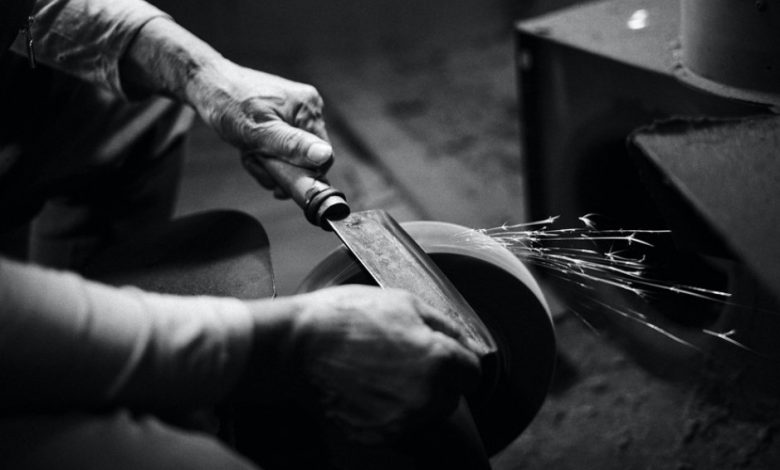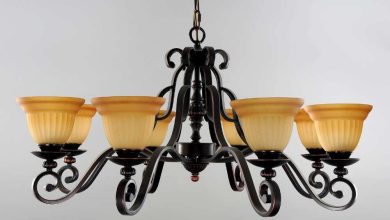Discover the Damascus knife’s hidden angle.

Even the most expensive and high-quality knives lose their sharpness and need to be sharpened. You can restore lost device clarity at home. But there are also some subtleties to keep in mind. It is not enough to move the blade with a sharpening stone. If you do not sharpen well, you run the risk of damaging the edge or increasing its opacity. Before starting work, it is important to determine the correct sharpening angle and monitor the sharpness of all knives.
The secret corner of the kitchen Damascus knife: what is it and why?
You don’t have to be a great physicist to understand that the thinner the edge of the Damascus knife, the better. The higher the cutting edge of the knife, the better. As easy as using a knife. The design feature of the Damascus knife minimizes the angle between the blades. The area in contact with the product will be smaller. When determining the right angle to sharpen a kitchen knife, consider the level of the supply relationship. This is the area of the blade where the slope of the knife enters the cutting edge.
The angle of sharpening a Damascus kitchen knife cannot be universal, it depends on:
- The purpose of the knife
- Steel type (large angle for ceramics, minimum for Japanese blades);
- The blade is sharpened by one or both.
- Blade design features
The originality of the knife can also be important, which is why the Japanese made one-way sharpening blades at an angle of up to 15 degrees. Europeans did not like this decorative border. Therefore, it is often limited to 30 degrees. The Japanese brand also manufactures European models with classic double-sided sharpening. But it is also right for me to make the most accurate and high-quality equipment. Therefore, even in such models, the minimum acceleration angle is 15 to 25 degrees.
In addition, the “Japanese” has a straight face, which is perfect for a triangle seen from the top. Accurate size is obtained by expert milling. “European” has a concave aspect of the triangle, which accelerates automatically. This indicator affects the cutting quality and service life of the knife. The edge of the concave is sharpened and the blade must be replaced.
Wide Angle Ceramic Damascus Knife Sharpening The edge of this material is usually sharpened at an angle of 40 degrees because the material breaks down a lot. It does not affect the cutting properties. This is because the blades are very hard and stiff at very high temperatures. Then sharpen with jewels.
How do you sharpen a Damascus knife at the right angle? How do you appreciate that?
It is advisable to know the angle of acceleration of a new product in time, which is determined by the manufacturer. During the use of the Damascus knife, the angle can change and it is difficult to guess what it was before. You can adjust the sharpening angles for different Custom Damascus knives. In the following ways:
With scissors,
The scissor blade should be as wide as possible. Sharpen the edge of the knife into the nucleus. Close the scissor blade at this distance. Mark the ellipse with a pencil on the paper and fix the corners. Measure the angles drawn by the protractor.
Using a candle.
It is necessary to light a candle and drip the molten wax with a layer of 0.5-1 cm on a horizontal surface. Place the plate in hot wax and leave until the dough is hard. Remove the paper. Measuring the angle from the birth hole and with the protractor in the picture
Using a Protractor.
This is a special technical device that determines the angle of the product. However, these devices are quite special and are not found in every home.
Ask the manufacturer.
If you have a professional knife of a well-known brand, you can get the initial sharpening angle of a particular model from the official representative of the brand or seller.
A device for adjusting the sharpening angle of a Damascus knife.
When calculating the cutting angle, consider how you want the rake angle to look when sharpening the tool. An experienced craftsman places the knife in the correct position in front of the sharpener. Inexperienced users may need sharpening angle support, guided by better performance. This allows you to place the blade on the sharpening tool in the desired position. Next to the blade base, the automatic and electric sharpener has a built-in angle bracket adjustable from 15 to 45 degrees.
The ideal sharpening angle matches the purpose of the tool and its design features. With the right blade sharpened at a right angle, the tool will regain its lost edge and be your handy chef’s assistant again.
If you like our article, you must express your opinion in the comment box, then share this article as much as possible.
Read More: What is the purpose of ghost kitchens?





